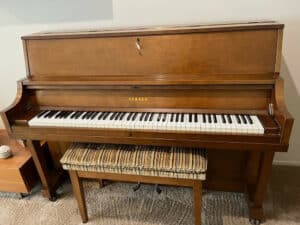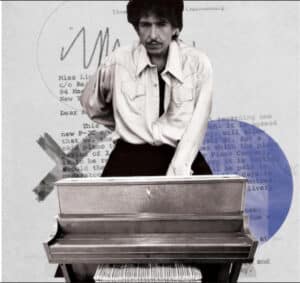by Laurence Carpenter

In the world of music memorabilia, there’s a common misconception that collecting is reserved for the wealthy or seasoned enthusiasts who can spend six figures on an iconic guitar or a rare handwritten lyric sheet.
While high-end items capture headlines, the heart of collecting lies in the passion, storytelling, and a love for music history. Whether you’re a lifelong fan of a specific artist or someone looking to build a meaningful collection, there are countless ways to begin without breaking the bank.
This guide explores how modern collectors can build an impressive collection on a modest budget, highlighting affordable entry points, strategies for finding treasures, and tips for preserving and growing the value of your items.
The Emotional and Financial Appeal of Collecting
Collecting music memorabilia offers a unique blend of emotional and financial rewards. For fans, owning a piece of music history creates a personal connection to the artists and moments that shaped their lives. Whether it’s a signed album from a formative year or a ticket stub from a legendary concert, these items hold sentimental value that can’t be measured in dollars alone.
From a financial perspective, starting small doesn’t mean your collection won’t grow in value. The worth of memorabilia tied to culturally significant moments of an artist’s career often appreciates over time, especially if the artist’s legacy continues to rise. A modest investment today could transform into a prized possession tomorrow.
Affordable Entry Points for Aspiring Collectors
While iconic instruments and stage-worn clothing might be out of reach for most beginners, there are plenty of budget-friendly options that still offer a meaningful connection to music history. Here are a few categories to explore:
• Signed Albums and Posters: Autographed items are often more affordable than people assume, especially for emerging artists or mid-career musicians. Keep an eye open for album pre-orders that include signed copies. Make sure to keep the invoices from these purchases as they help to prove the item’s authenticity.
• Tour Merchandise: Limited-edition T-shirts, programs, and posters from concerts can be found for reasonable prices, especially soon after a tour concludes. These items often become more valuable with time, particularly if the tour itself becomes iconic.
• Event Tickets and Passes: Vintage ticket stubs, backstage passes, and festival wristbands can be affordable collectibles with historical
significance, especially from landmark tours or festivals like Woodstock, Glastonbury, or Live Aid.
• Fan Club Exclusives: Many artists offer unique collectibles through official fan clubs, including limited-edition vinyl, pins, or holiday gifts. These items are often undervalued in the resale market, providing an opportunity for savvy collectors.
Where to Find Budget-Friendly Memorabilia

The modern collector has access to a wide range of resources for finding affordable memorabilia. Knowing where to look is half the battle. Here are some places to start:
• Online Marketplaces: Platforms like eBay, Discogs, and Reverb are treasure troves for music memorabilia. Set alerts for specific items to snag deals before others notice.
• Thrift Stores and Estate Sales: It’s not uncommon to stumble upon rare vinyl records, posters, or merchandise in second-hand shops or at estate sales. The thrill of the hunt makes these finds even more rewarding.
• Record Stores and Conventions: Local record shops often host memorabilia sales or trade events where collectors can find hidden gems. Music conventions and fairs are also great for connecting with like-minded enthusiasts.
• Social Media Groups: Online communities on Facebook or Reddit allow collectors to trade, sell, or simply discuss their interests. These groups are often a great resource for finding deals directly from other fans.
Tips for Building a Meaningful Collection
To make the most of your budget and create a collection you’re proud of, consider the following strategies:
• Start with Emerging Artists: Investing in memorabilia from up-and-coming artists can be both affordable and potentially lucrative. If they rise to stardom, early items from their career can become highly sought after.
• Focus on Themes: Whether it’s a specific genre, artist, or era, narrowing your focus can make your collection more cohesive and meaningful. A collection of punk flyers or Britpop tour merch tells a more compelling story than a random assortment of items.
• Research Provenance: Authenticity matters, even for lower-cost items. Be cautious when buying autographs or rare items online and verify the seller’s reputation.
Preserving Your Collection
Even budget-friendly items need proper care to retain their value. Here are some tips for maintaining your collection:
• Storage: Keep posters and paper items in archival sleeves, store vinyl records upright in a cool, dry place, and avoid exposing fabrics to sunlight. Condition greatly affects the value of a collectible.
• Display Options: Use frames, shadow boxes, or display cases to show off your memorabilia while protecting it from damage. UV glass may be required to protect against light damage.
• Documentation: Maintain records of where and when you purchased each item, especially for autographed pieces.
A Journey Worth Starting
Building a collection on a budget is not just about acquiring objects – it’s about creating a personal connection to music history and telling a story through the items you choose. Whether you start with a signed CD, a concert poster, or a rare T-shirt, the true value of your collection lies in the passion and dedication behind it.
For the modern collector, the possibilities are endless. With a bit of strategy, a sharp eye for bargains, and a love for music, you can curate a
collection that not only celebrates your favorite artists but could also grow into something truly extraordinary over time. So why wait? Start your journey today – because every great collection begins with a single piece.
Laurence Carpenter is one of the leading music memorabilia collectors and dealers in the world. He also curates pieces for the Grammy Museum, has been featured on British television and radio programs, and specializes in representing musicians, collectors, and their estates in the sale of their archives to research institutions and museums. Carpenter lives in Ireland where he is the Founder and Managing Director of Rock Solid Investments.
He has been a passionate collector, dealer, and investor of culturally important music memorabilia for over 30 years. If you’re considering buying or selling an item but are uncertain about the next steps, please don’t hesitate to reach out by email at laurence@popicons.com or at his
website: RockSolidInvestments.ie






Related posts: